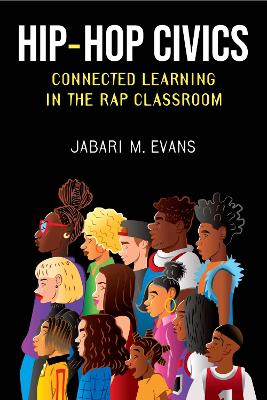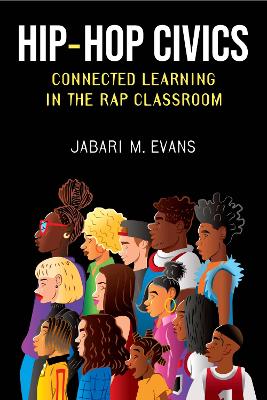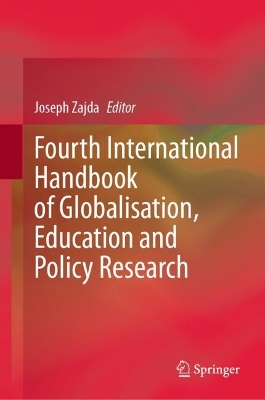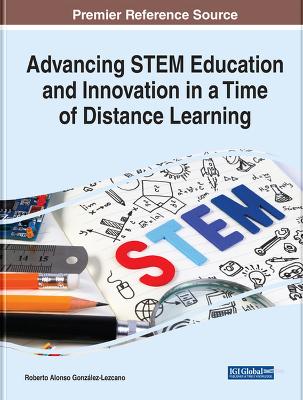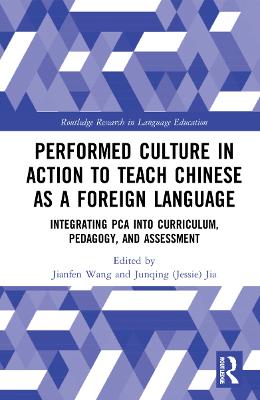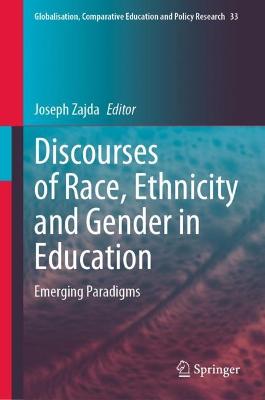STEM, Theatre Arts, and Interdisciplinary Integrative Learning
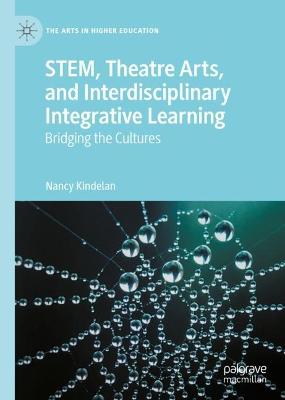 portes grátis
portes grátis
STEM, Theatre Arts, and Interdisciplinary Integrative Learning
Bridging the Cultures
Kindelan, Nancy
Springer International Publishing AG
10/2022
338
Dura
Inglês
9783031089060
15 a 20 dias
Descrição não disponível.
1 Introduction: Why Include Theatre Arts in New Modes of Undergraduate Education?.- References and Suggestions for Further Reading.- 2 Meeting the Challenges of Shifting Education Paradigms.- Introduction.- Greater Expectations, AAC&U's Essential Learning Outcomes, and Principles of Excellence.- Educational Practices.- Integrating STEM with the Humanities and Arts.- Conclusions.- References and Suggestions for Further Reading.- 3 Let's Get Started.- Introduction.- Liberal Arts, Liberal Education, and General Education.- Why Integration and What Is It?.- STEM, STEAM, and SHTEAM.- Other Examples of Integration (STS, STIRS, and STEMM).- Modes of Learning: Multidisciplinary, Interdisciplinary, Transdisciplinary, Integrative, and Applied.- Transformative Learning.- Factoring in Implementation.- Conclusions.- References and Suggestions for Further Reading.- 4 Enhancing Learning Through Integrative Education: On the Road.- Introduction.- Learning in the Digital Age.- Integrative Learning: Signature Work and Capstones.- The Whole Is Greater than the Sum of Its Parts.- Disciplinary Knowledge Versus Interdisciplinary Connections.- Additional Roadblocks.- The Road Ahead.- From the Inside Looking Out.- A Call to Action.- Conclusions.- References and Suggestions for Further Reading.- 5 Bridging the Gap Between STEM and Theatre Arts.- Introduction.- Theatre Arts Programs and the Theatre Practitioner.- Signature Pedagogies.- The Theatre Practitioner.- The Scientist.- The Mathematician.- The Engineer.- The Scientist, the Mathematician, the Engineer, and the Theatre Artist.- Liminal Spaces.- The Artistic Paradox: Humanism Versus Practicality.- Conclusions.- References and Suggestions for Further Reading.- 6 The Marriage of Disparate Disciplines.- Introduction.- Bridging the Gap Between Theatre and STEM.- The Artist as Scientist and the Scientist as Artist.- Leonardo da Vinci and Johann Wolfgang von Goethe.- Collaborative Partnerships.- Conclusions.- References and Suggestions for Further Reading.- 7 The Creative Spirit.- Introduction.- What Is Creativity?.- Where Is Creativity?.- Can Creativity Be Taught?.- Crossing Boundaries: Myths, Misconceptions, and Labels.- The New Frontier: "ArtScience" Collaborations.- Creative Pathways.- The Practice of Making.- Design Thinking and Systems Thinking.- Conclusions.- References and Suggestions for Further Reading.- 8 Facing the Creative Imperative.- Introduction.- Decoding the Disciplines.- More About Decoding.- Unpacking the Language, Strategies, and Creative Process in Theatre Arts.- No Muses on Stage Please.- Beyond "Soft Skills".- Toward Effective Storytelling.- What Is an Imagistic Analysis?.- Practicing the Art of Creativity in Theatre.- Teasing Out Similarities.- Divergent and Convergent Thinking.- Various Positions on the Scientific Method.- Sharing Creative Practices: Engineering and Theatre.- Social and Professional Skills.- Walking the Walk.- Sitting at the Table of Curriculum Reform.- Conclusions.- References and Suggestions for Further Reading.- 9 Answered and Unanswered Questions.- Introduction.- Making the Case.- Looking Forward.- The Players and the Process.- Questions, Concerns, and Suggestions for Further Research.- References and Suggestions for Further Reading.- Appendix V1: Good Questions: Drawing on Theater to Educate Reflective Engineers as Civic Participants, by Alison Wood.- Appendix V2: Constructing and Performing the Self: An Interdisciplinary Course That Transforms Scholars and Selves, by Jonathan M. Adler.- Appendix V3: Contemplating Science: A New Educational Paradigm for Interdisciplinary and Integrative Learning in Engineering, by Yevgeniya V. Zastavker and Madhvi J. Venkatesh.- Appendix V4: Theater Brings Community Voice to Bear on Wicked Problems, by Sarah A. Brownell.- Appendix V5: The Three-Year Theatre Engineering Capstone Experience: Scaffolding the Integration of Theory and Practice, by Rich Dionne.- Appendix V6: Portfolios That Build Community, by Leigh Witek.- Appendix V7: Going Beneath, by Lance Gharavi.- Appendix V8: Transdisciplinary and Multimodal Live Performance Research and Integration into the Curriculum, by Daniel Fine.- Appendix V9: Data Theatre, by Rahul Bhargava.- Appendix V10: Mechanics Meets Metaphor: An Interdisciplinary Web, by Liam Hofmeister.- Appendix V11: A Heart-Brain Connection: What Giraffes Taught Me About Science and the Arts, by Virginia Anderson.- Appendix V12: Reflections, by Shane L. Collins.- Appendix V13: Catalyst Collaborative@MIT: Pictures of Practice, by Debra Wise.- Biographies.- Index.
Este título pertence ao(s) assunto(s) indicados(s). Para ver outros títulos clique no assunto desejado.
STEM education;integrative learning;cross-curriculum;applied learning;learning outcomes;STEAM;Creativity
1 Introduction: Why Include Theatre Arts in New Modes of Undergraduate Education?.- References and Suggestions for Further Reading.- 2 Meeting the Challenges of Shifting Education Paradigms.- Introduction.- Greater Expectations, AAC&U's Essential Learning Outcomes, and Principles of Excellence.- Educational Practices.- Integrating STEM with the Humanities and Arts.- Conclusions.- References and Suggestions for Further Reading.- 3 Let's Get Started.- Introduction.- Liberal Arts, Liberal Education, and General Education.- Why Integration and What Is It?.- STEM, STEAM, and SHTEAM.- Other Examples of Integration (STS, STIRS, and STEMM).- Modes of Learning: Multidisciplinary, Interdisciplinary, Transdisciplinary, Integrative, and Applied.- Transformative Learning.- Factoring in Implementation.- Conclusions.- References and Suggestions for Further Reading.- 4 Enhancing Learning Through Integrative Education: On the Road.- Introduction.- Learning in the Digital Age.- Integrative Learning: Signature Work and Capstones.- The Whole Is Greater than the Sum of Its Parts.- Disciplinary Knowledge Versus Interdisciplinary Connections.- Additional Roadblocks.- The Road Ahead.- From the Inside Looking Out.- A Call to Action.- Conclusions.- References and Suggestions for Further Reading.- 5 Bridging the Gap Between STEM and Theatre Arts.- Introduction.- Theatre Arts Programs and the Theatre Practitioner.- Signature Pedagogies.- The Theatre Practitioner.- The Scientist.- The Mathematician.- The Engineer.- The Scientist, the Mathematician, the Engineer, and the Theatre Artist.- Liminal Spaces.- The Artistic Paradox: Humanism Versus Practicality.- Conclusions.- References and Suggestions for Further Reading.- 6 The Marriage of Disparate Disciplines.- Introduction.- Bridging the Gap Between Theatre and STEM.- The Artist as Scientist and the Scientist as Artist.- Leonardo da Vinci and Johann Wolfgang von Goethe.- Collaborative Partnerships.- Conclusions.- References and Suggestions for Further Reading.- 7 The Creative Spirit.- Introduction.- What Is Creativity?.- Where Is Creativity?.- Can Creativity Be Taught?.- Crossing Boundaries: Myths, Misconceptions, and Labels.- The New Frontier: "ArtScience" Collaborations.- Creative Pathways.- The Practice of Making.- Design Thinking and Systems Thinking.- Conclusions.- References and Suggestions for Further Reading.- 8 Facing the Creative Imperative.- Introduction.- Decoding the Disciplines.- More About Decoding.- Unpacking the Language, Strategies, and Creative Process in Theatre Arts.- No Muses on Stage Please.- Beyond "Soft Skills".- Toward Effective Storytelling.- What Is an Imagistic Analysis?.- Practicing the Art of Creativity in Theatre.- Teasing Out Similarities.- Divergent and Convergent Thinking.- Various Positions on the Scientific Method.- Sharing Creative Practices: Engineering and Theatre.- Social and Professional Skills.- Walking the Walk.- Sitting at the Table of Curriculum Reform.- Conclusions.- References and Suggestions for Further Reading.- 9 Answered and Unanswered Questions.- Introduction.- Making the Case.- Looking Forward.- The Players and the Process.- Questions, Concerns, and Suggestions for Further Research.- References and Suggestions for Further Reading.- Appendix V1: Good Questions: Drawing on Theater to Educate Reflective Engineers as Civic Participants, by Alison Wood.- Appendix V2: Constructing and Performing the Self: An Interdisciplinary Course That Transforms Scholars and Selves, by Jonathan M. Adler.- Appendix V3: Contemplating Science: A New Educational Paradigm for Interdisciplinary and Integrative Learning in Engineering, by Yevgeniya V. Zastavker and Madhvi J. Venkatesh.- Appendix V4: Theater Brings Community Voice to Bear on Wicked Problems, by Sarah A. Brownell.- Appendix V5: The Three-Year Theatre Engineering Capstone Experience: Scaffolding the Integration of Theory and Practice, by Rich Dionne.- Appendix V6: Portfolios That Build Community, by Leigh Witek.- Appendix V7: Going Beneath, by Lance Gharavi.- Appendix V8: Transdisciplinary and Multimodal Live Performance Research and Integration into the Curriculum, by Daniel Fine.- Appendix V9: Data Theatre, by Rahul Bhargava.- Appendix V10: Mechanics Meets Metaphor: An Interdisciplinary Web, by Liam Hofmeister.- Appendix V11: A Heart-Brain Connection: What Giraffes Taught Me About Science and the Arts, by Virginia Anderson.- Appendix V12: Reflections, by Shane L. Collins.- Appendix V13: Catalyst Collaborative@MIT: Pictures of Practice, by Debra Wise.- Biographies.- Index.
Este título pertence ao(s) assunto(s) indicados(s). Para ver outros títulos clique no assunto desejado.

